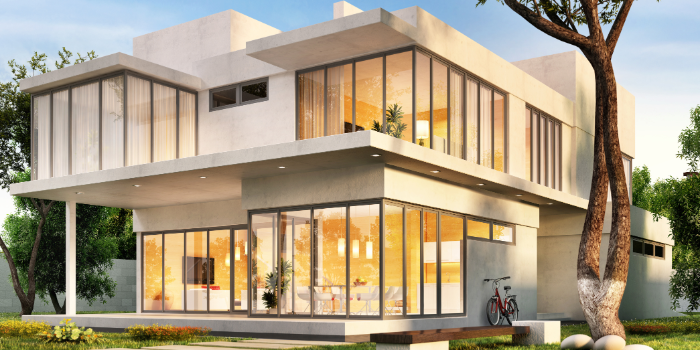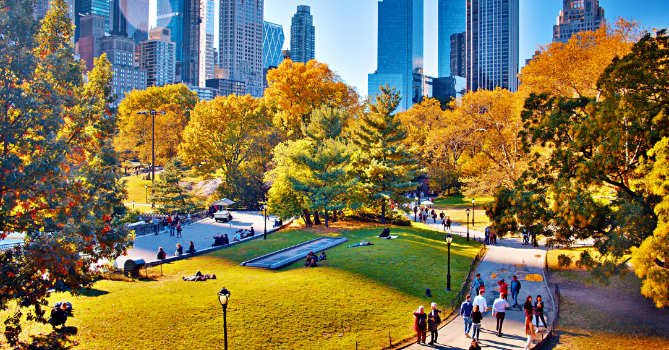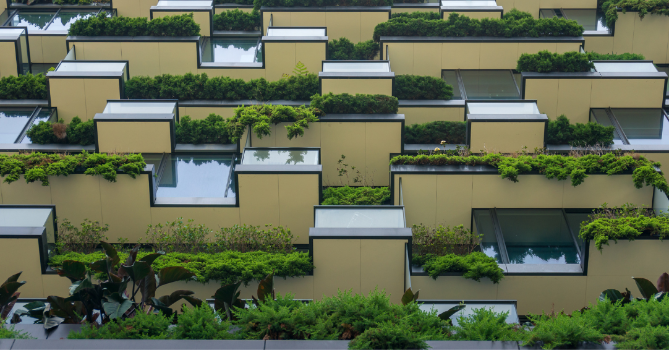
From Dream to Reality: Innovating
Think about the world we live in—buildings everywhere, from small homes to towering skyscrapers. Now, imagine if every one of those buildings could help the earth. Sounds amazing, right? This is where the magic of blending sustainability with architecture comes in. It’s all about making spaces that not only look good but do good, too.
The trick is to not just dream about sustainable designs but to actually build them. It's like turning those awesome ideas on paper into real, breathing parts of our cities. And guess what? Innovation is the secret ingredient here. It’s the tool that makes all this possible. By thinking outside the box, architects and builders are creating spaces that use less energy, recycle rainwater, and even produce their own power!
But here’s the deal: doing this isn’t just nice to have; it’s a must-have. Our planet needs it, and we, as the people living on it, need it too. So, let’s dive into this journey of making sustainability a real part of our lives, starting with the places we live, work, and play. It’s all about taking those first steps from paper to practice.
Architects are kind of like superheroes of the building world, but instead of capes, they have blueprints and models. They've got this huge job: to design buildings that not only look cool but are also friends with the environment. It's a big deal because the way we build stuff can have a massive impact on our planet.
You see, buildings use up a lot of energy and materials. If architects focus on making their designs more sustainable, they can seriously help the Earth. This means thinking about how a building uses energy, where it gets its water, and even the air around it. And the good part? Many architects are already on it. They're mixing innovation with sustainability, creating spaces that give back to the environment.
Imagine buildings that produce their own energy, recycle rainwater, or even clean the air. That’s the goal. And it's not just about the environment. These designs can also save money and make buildings nicer places for us to live and work in. Architects are pushing the boundaries, using new materials and technologies to make this dream a reality.
But it’s not always easy. The building world can be slow to change. Yet, architects are leading the way, showing that sustainable design isn't just possible; it's essential for our future. They’re proving that with creativity and courage, we can build a world that's better for everyone.
Let's talk about some real-life wizardry in the world of buildings, where innovation meets sustainability. These aren't your ordinary buildings; they're like the superheroes of architecture, each with its own superpower for helping the planet.
First up, we have the Shanghai Tower in China. Picture this: a giant twisty building that not only looks cool but acts cool by saving energy. It recycles water, catches rain for plants, and even has wind turbines to make electricity. This twist isn't just for show; it actually makes the building stand up better to wind, saving materials and energy.
Then, there's Amager Bakke in Copenhagen, which is basically a power plant in disguise. But it's not any old power plant; it's one where you can ski on the roof! Yes, you heard that right. It takes trash and turns it into heat for homes, and its roof is a year-round ski slope. Talk about multi-tasking for the environment.
Over in Sydney, the One Central Park building is like a garden in the sky. It's got living walls and even a water recycling system to keep its plants happy and thriving. Plus, it's designed to save as much energy as possible, proving that buildings can be both beautiful and kind to the planet.

In New York, the Bank of America Tower shines bright as an example of how skyscrapers can be green. Made with recycled materials and designed to save water and energy, it's a beacon of sustainable design in one of the busiest cities in the world.
And don't forget the Manitoba Hydro Place in Winnipeg, with its super-smart design that uses nature to keep the inside comfortable all year round. It's so energy-efficient that it's considered one of the greenest office buildings out there.
Each of these buildings tells a story of how architecture isn't just about creating spaces but about shaping a better future for our planet. They prove that with some creativity and a lot of innovation, buildings can do more than just exist; they can contribute to the health and happiness of the environment and the people living in it.
In the world of architecture, being green is getting a whole new toolkit, thanks to some smart tech and fresh ideas. Let's peel back the curtain on what's making sustainable buildings not just a trend, but the future.
Think materials that sound like they're from a sci-fi movie: there's stuff like "Sugarcrete," made from—you guessed it—sugar, that's pushing the boundaries of what buildings can be made from. Then, imagine painting a building with "smog-eating" coatings that clean the air, or using bricks that let water seep through to prevent floods. These aren't just ideas; they're real things happening right now.
Technology's also playing a huge part. Digital tools and AI are becoming the architects' new best friends, helping design buildings that are smarter about energy use. And companies are popping up with innovations like paints and coatings that don't just look good but do good , cutting down on harmful chemicals and even cleaning the air.
But it's not just about the fancy gadgets and materials. It's also about going back to basics, using the sun, wind, and rain to our advantage, and designing buildings that fit into nature rather than fighting against it. From giant wind turbines on top of skyscrapers to walls covered in plants, the future of architecture is looking greener by the day.
This shift towards sustainable architecture isn't just a fad. It's a movement towards making our buildings take care of us and the planet, all at once. And with each new innovation, we're getting closer to a world where every building has a bit of green genius in it.
Making buildings greener isn't always a walk in the park. The main hurdles? Cost, tradition, and sometimes, just the fear of trying something new. But here's the good news: these challenges aren't brick walls; they're just speed bumps on the road to a greener future.

First off, cost. Yes, some eco-friendly materials and tech can be pricey upfront. But think of it as investing in a savings account, where the returns come as lower energy bills and a happier planet.
Then there's sticking to what we know. The building world can be a bit set in its ways, but shaking things up with sustainable practices is a chance to leave a lasting legacy. It's about architects and builders getting creative, using new materials, and showing that green designs can be both beautiful and functional.
The trick to overcoming these barriers? A mix of education, support from laws and policies, and sharing success stories of sustainable buildings that dazzle and inspire. By showing that going green is not only possible but profitable and desirable, we can pave the way for a future where every building adds to the health of our planet.
In the journey from paper to practice, architects and innovators are proving that sustainable design is not just a dream—it's a necessity. As we've seen through inspiring examples and emerging trends, buildings can indeed be both beautiful and beneficial to our planet. By embracing innovative materials, leveraging technology, and overcoming traditional barriers, we're paving a path towards a greener, more sustainable world. This adventure is about more than just constructing spaces; it's about creating a future where architecture and nature thrive together. Let's continue to push the boundaries, share our successes, and inspire each other towards making sustainability an integral part of every building.
Now it's your turn to be part of the change. Embrace the green in every space you inhabit, design, or dream about. Share the stories of sustainable innovation that inspire you, and let's collectively push for a future where every building breathes life into our world. Together, we can make sustainability the foundation of everything we build.